This is one of those questions where you’ll get a different opinion from each quilter you ask: Should you pre-wash your fabrics before you quilt?
It could save you a lot of time if you don’t have to wash your fabric but it could cost you more time and frustration in the end if you choose wrong.
How do you decide what to do?
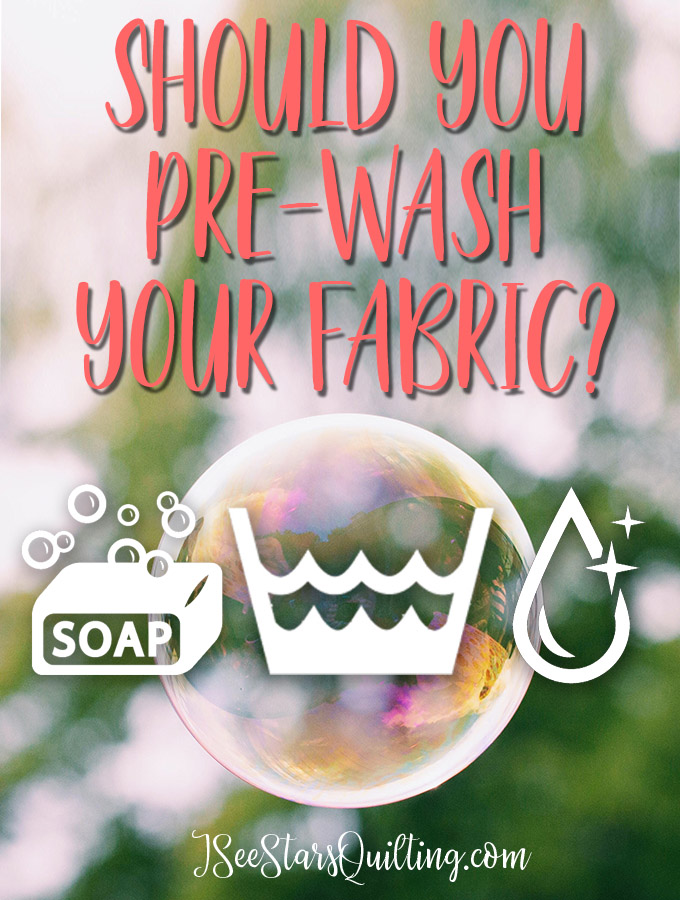
There are certain circumstances when all quilters SHOULD wash their fabric and it is important to know when you can SKIP washing.
Check out the info below on HOW to wash your fabric to avoid ruining it.
Let’s be honest… no one likes to waste time… so let’s dive in, because this is a pretty big question for newbie and beginner quilters.
You SHOULD pre-wash your fabrics if:
The quilt will be given to a baby or child
Babies have more sensitive skin and any chemicals or residue from manufacturing could irritate their skin. It’s just not a good risk to take.
However, it doesn’t matter what stage of the quilting process you choose to wash the fabrics. You could choose to wash as soon as you buy the fabric, or after you sew all the pieces together and the quilt is bound.
Either way works. Personally, I choose to wash baby quilts after I’ve finished them. It helps to give the quilt a good crinkle, I get to make sure nothing is going to happen to it in the wash and also make sure that a stray puppy hair isn’t going with it.
If you have allergies
Perhaps this goes without saying… but if you have skin allergies and find that you are sensitive to dyes in fabrics, you might want to wash the fabric before cutting to reduce or eliminate any reactions.
Also, if you acquired the fabric at an estate sale or second hand shop, it helps to know that its clean before you begin any projects.
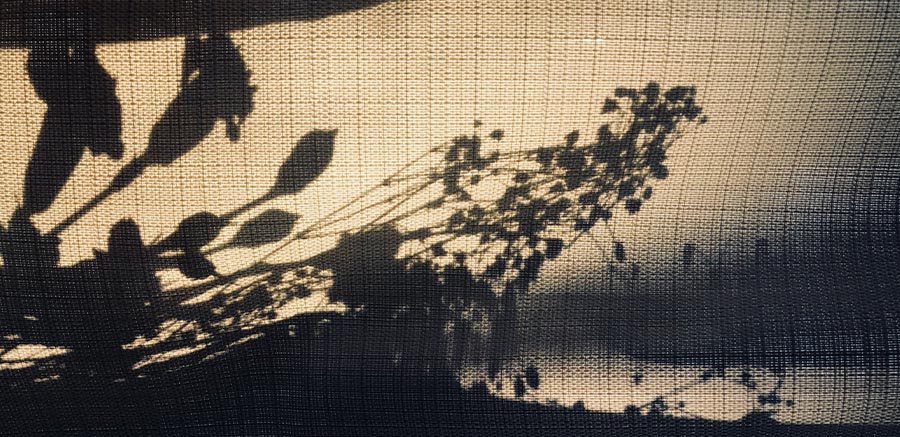
You are concerned about fabric shrinkage
I like to quilt with 100% cotton. If you’re quilting with a material that you’re not sure of the makeup, you might want to consider a pre-wash. Washing the fabric before cutting it will reduce the amount of shrink-age.
Vintage Fabric Dyes
Vintage fabrics are the reason we have this whole debate in the first place! Most modern day fabric companies use much more responsible dyes that have been engineered to be not only safer for our planet, but more likely to stay put and less likely to bleed into areas where they aren’t wanted.
Wash vintage fabrics at your own risk. There is too many if, ands and buts to go into the possible outcomes for this blog post. Do your research beforehand or opt to hand wash your fabric.
If you’re worried about colors bleeding
Have you ever dealt with a bleeding quilt? – if not, thank your lucky stars because it is the absolute worst thing in the world. (Do you think I’m being dramatic? I hope the quilting spirits are always kind to you)
The bright vibrant colors tend to be the worst culprits: navy, reds and purples. When using fabrics with high contrast (think red and white combo), washing your fabrics before stitching will reduce the color from later bleeding onto the light fabrics during washing or storing the quilt.
Consider a good pre-wash if you have a very high contrast quilt that you want to stay a good high contrast quilt.
Why You Shouldn’t Pre-Wash Your Fabrics!
I know I know… I’m pretty sure I heard an “amen!” from somewhere in the back because don’t I know that anything having to do with the washing machine and extra steps in my day is just a pain in the rear end!
Ok here we go…
MORE TIME TO SEW!
I can’t remember one single time that I’ve come home from the fabric store not completely giddy with a fabric find and decided that I was ready to sit and wait to cut into it while I pop it in the washing machine, then the dryer… then spend a good amount of time ironing it out flat again.
Ain’t nobody got time for THAT! Am I right? Whew…
If you choose not to pre-wash… you can start planning and cutting just as soon as your little fit hit the threshold of your sewing space!
You are not concerned about fabric shrinkage
Wait, what? Yes, this is going to make the pros list and the cons list. Because sometimes that perfect fabric crinkle/wrinkle on a quilt is absolutely the mark of a good snuggle quilt success.
Sometimes, you want it, sometimes you don’t. It’s a personal preference thing, but it happens usually when the fabrics shrink up just a little bit after being all sewn together and makes it’s mark within the quilting boundaries.
Personally, I think its wonderful!
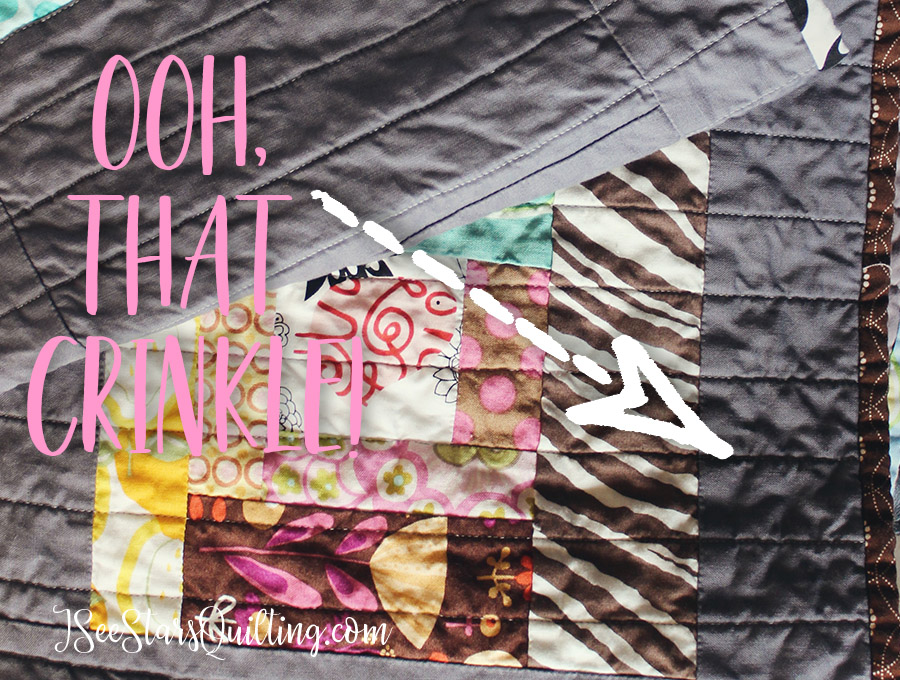
Stiffer fabric makes for easier cutting/sewing
Remember those chemicals from further up in the post? ha well… they kind of come in handy actually.
The dyes and the chemicals from the factory kind of act as a starch to the fabric. So it’s a little bit stiffer and easier to work with when you’re cutting and sewing.
Of course, if this bothers you… you could pre-wash to get rid of the chemicals and then simply add the starch back in while you’re ironing.
HOW TO PRE-WASH YOUR FABRIC
If you’ve decided pre-washing is the way to go, here are the simple steps to take to make sure you and your fabric are taken care of.
- You don’t want any raw edges on your fabric. They will fray in the wash and you’ll end up with a tangled stringy mess.
Solution: Use pinking shears or the attachment for your rotary blade to trim the edges of your fabric. (Don’t worry about the selvage edges as they are already safe from fraying.
- Wash your cotton quilting fabrics in cool water with a mild detergent. Check out these suggested soaps for quilts.
- Keep wrinkles to a minimum by drying fabrics with low heat and removing them from the dryer as soon as they are dry.
- Some quilters like to iron/press their fabrics right away. You could also choose to press them when you’re ready to start your project.
I don’t like to make time for ironing if I can help it, so I keep a close eye on the dryer and grab them just after that last tumble. Then I fold them as nicely as possible and stash them away. This keeps the ironing time to an absolute minimum (and most of the time I don’t even bother with it!)
Only you can decide if pre-washing is for you or not. If you’ve never given it a try, I suggest you do it at least once just to see if you like it or not. You never know until you try it out, right?
At some point, you will have to wash your finished quilt. I have a free printable download sheet: Quilt Care 101 that details how and when you should wash your quilt. It’s also a super cute printable that makes a great little token to include with any quilt that you gift so your recipient is prepared to take care of their gorgeous quilt too!
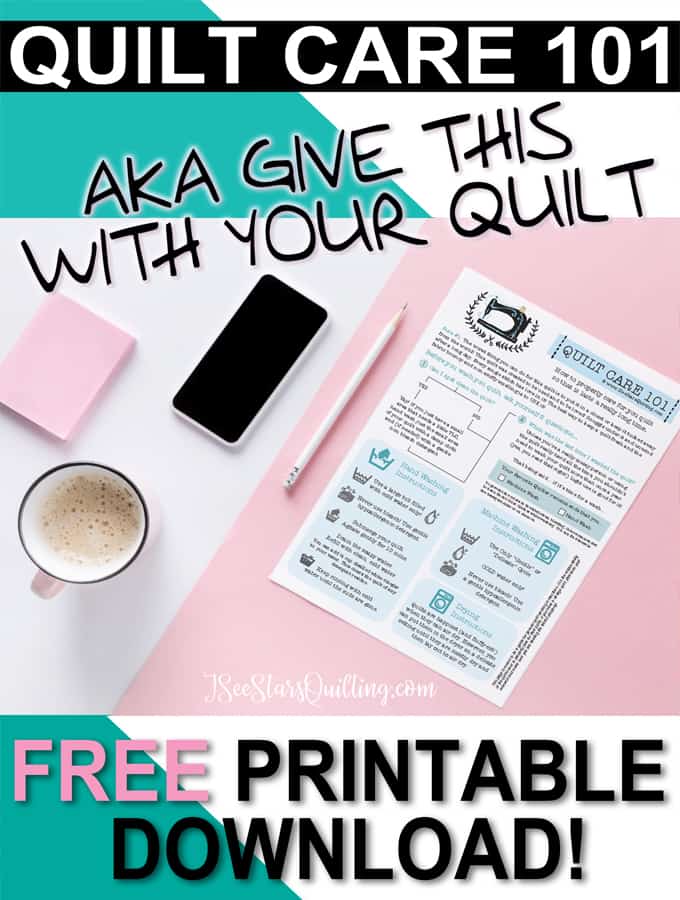
A few more notes about pre-washing…
Don’t Prewash Pre-cuts. ever. ever. never.
Any fabric that is the size of a fat quarter or smaller… don’t do it. The edges tend to unravel and the shape/size of your fabric can change so much that it isn’t useable anymore. No one wants that.
FYI: a fat quarter usually measures 18″ x 21″
Color catchers will one day be your HERO BFF!
Even if you’ve been quilting for 200 years and you’ve never had a quilt bleed on you. All the quilting angels are on your side and the dyes have stayed put all this time… you should still have at least a few of these on hand.
Because one day, it could happen to you. You’ll have 2 choices. 1) crumple up into a ball (it doesn’t really solve anything but it is exactly what you feel like doing) or 2) grab a handful of color catchers and start praying!
Whether you decide to pre-wash your fabrics or not, it is not a bad idea to throw in a color catcher sheet with your quilt when you wash it the first few times. ESPECIALLY if your quilt has some pretty deep colors in it.
I like to buy the big box of color catchers. I like to shop in bulk, but it is also another handy token to gift with your quilt… You can read more about how to stop a bleeding quilt here.
Ok, ok… so it’s really just a little extra assurance that you’ve given your little quilt all that you can as you wish it farewell!
Whew, thats a lot of talk about fabric and laundry! What do you think? What is your take? Do you pre-wash?
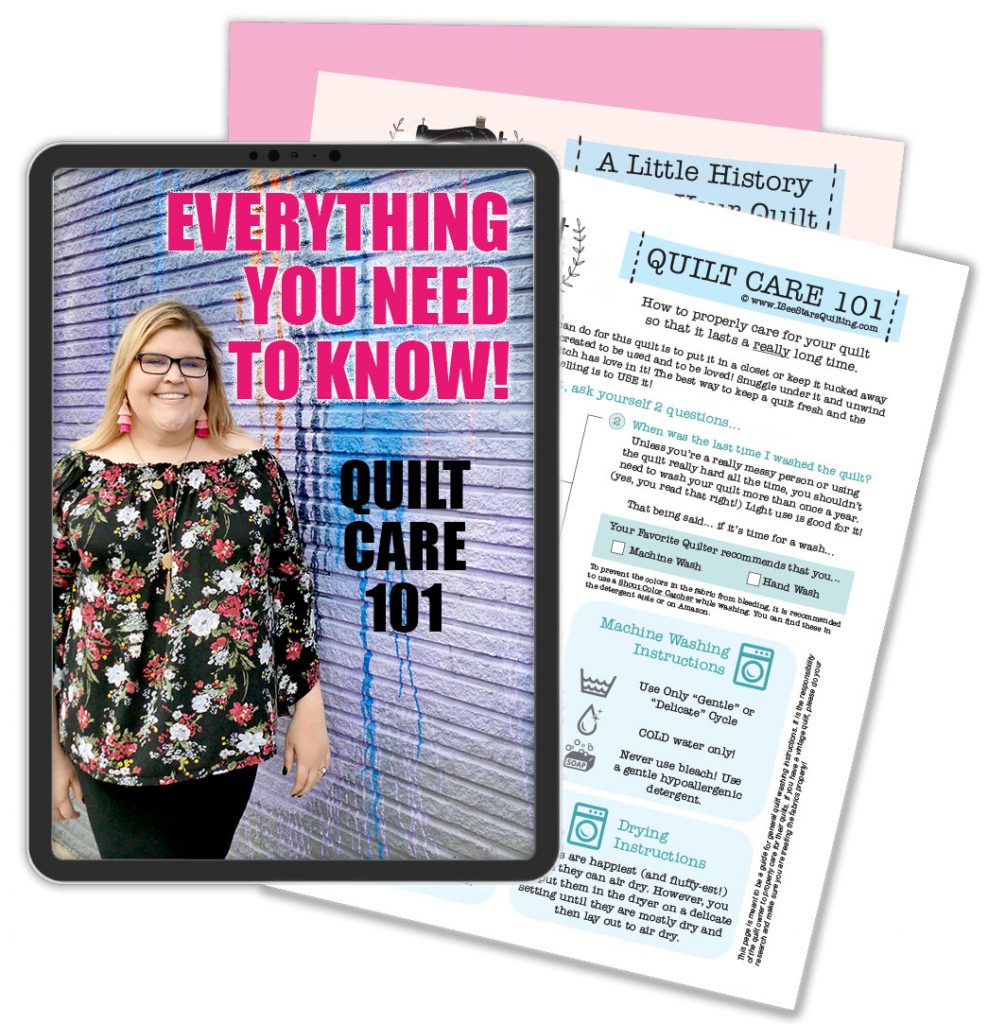

I have never prewashed any quilting fabric. I made my granddaughter a Minny Mouse quilt all bright red, black and white fabric. I forgot to tell my daughter to use color catchers and when I asked she told she has washed the quilt several times because the dog sleeps on the quilt too. But fabric has never run and nothing has happened to the white!!!
When I first started quilting sometime before 2008, I washed all of the quilting fabrics I purchased before cutting into them. After the washing & drying process I would starch & press them. Then it was time to cut into the beauties! That does take a lot of time, while the entire time I’m thinking what a bunch of wasted time I have lost when I could have been cutting, sewing & quilting. Approximately 6-7 years ago I came across Color Catcher Sheets that changed my quilting life for the better. I cannot say enough wonderful things about the Color Catcher Sheets except if you think for one minute that your fabrics may bleed, do the safe thing and use one or two of them in your laundry. After all the years of using them I am still amazed on how they work, and at the same time quite puzzled by it also. Now I NEVER wash my new quilting fabrics before they become a finished quilt. Like you Christen, I rather love the little “crinkly” look in a finished quilt.
I come from a background of sewing clothing for our medieval group, so I have a big stash of linen yardage. For garments I’ve always been petrified of shrinkage, (Arrrgggghhh – all my work wasted!!!) so I never dared not wash the fabric as soon as I got home and could run a line of zigzag across the ends. And ironing linen is kind of a zen thing a la “chop wood carry water”
So, coming to quilting from that feels especially freeing to not need to wait while the washer is chugging along! I love it! (Not to mention loving precuts and quilt kits.)
Hi Christen,
Interesting article, YES!, I definitely wash all of my fabrics before sewing regardless where it comes from.
Not keen on the bubbly effect on quilts.
Have a good weekend.
Meg
I normally don’t prewash, I do on occasion and then I serge the cut edges so I don’t have a hundred long strings tangled when I get done washing and drying it. If it is flannel, I usually do since it shrinks quite a bit.. It is usually a project by project decision.
Just to let you know I wash yardage but precuts i steam with a wet towel to rid wrinkles and ease the fabric
I love how you let everyone know its ok to do what they prefer The guidance to others was great
am not getting much done with masks making and picking up mail for those in the hospital
I can sympathize with the allergies mine are giving me a hard time also
enjoy your weekend if you can lol I will be busy
my brain is sludge right now even though its early I am headed for bed
Hey Christen, I see that you like to use Color Catcher for your quilt pre wash. I did too until a noticed another brand sitting beside my trusted brand at Walmart. It is called Color Grabber. It was cheaper so I bought it. It was a little smaller so but it caught so much more dye. I wanted to show my quilt guild so I washed two washes with the same fabric. I was shocked. There was no doubt about it. The Color Grabber was the clear winner. Just thought you would like to know.
Pre-wash or not to pre-wash also depends on the quality of your fabric. Quilt store fabric is not the same as Walmart or Joann’s. Quilt shop cotton usually doesn’t require pre-washing. I like the stiffness of unwashed fabric for more accurate cutting and piecing. I have asthma and good quality fabric doesn’t cause me any breathing problems. I recently made a quilt of high contrast batiks. I bought a great batik for the back on sale – a deep fuchia. I tested it in warm/hot water, regular detergent and it didn’t bleed, even though all my quilts are laundered in cold water with a mild quilting detergent. I did find, however, as I was prewashing fabric for face masks that my older batiks were not as colorfast as the newer ones. I always launder quilts I’m giving to babies and children after they are sewn, quilted, and bound. I put together a little kit – Orvis soap, color catchers, and laundering instructions when I gift a quilt.
My general rule of thumb is to consider the use of the final product. Quilts, if used regularly, will need frequent laundering so I prewash the fabric. A quilted decorative cushion would not.
I like to shop thrift stores for scrappy quilts, therefore I always prewash those. Normally I don’t prewash new fabric. I like the crinkle too. However, with Covid-19 I am rethinking this. I don’t know who has touched this material or coughed near it as it sits on the rack. I don’t want to chance getting sick. I think when my material comes in the mail, I’ll prewash. Thanks for tbe tip about drying.
If I am sewing a garment (shirt, pajamas, etc), I always prewash. Any time I am working with flannel, again, it needs to be prewashed, because it will shrink. For quilts, I don’t prewash the fabrics, but I usually wash the quilt before I gift it or donate it. The biggest “take a deep breath” moment was my friend’s retirement quilt that had signature squares (with white fabric) on one side and gorgeous purple (her favorite color) batik on the other side. I didn’t know if I should wash it before I gave it to her, but a member of our quilt guild said “Wash it, with color catchers.” I put 4 color catchers in. The purple bled a little bit, so there was color on the color catchers, but no problem with dye running onto the light fabric. if you do have something that you do prewash and it bleeds, a lot, try Retayne. I had some flannel that I washed several times and it bled and bled and bled. I bought a bottle of Retayne at local quilt store, followed the driections, and no more bleeding.